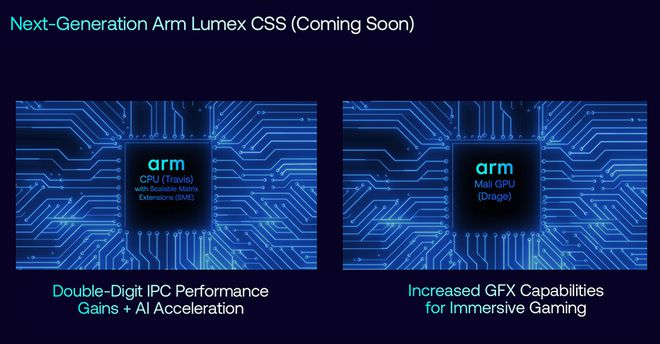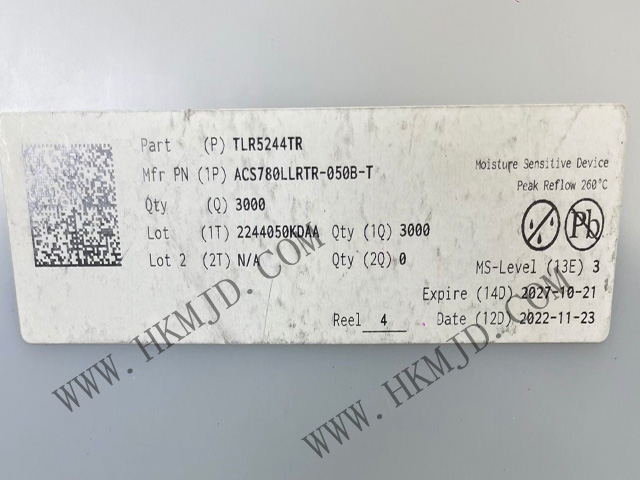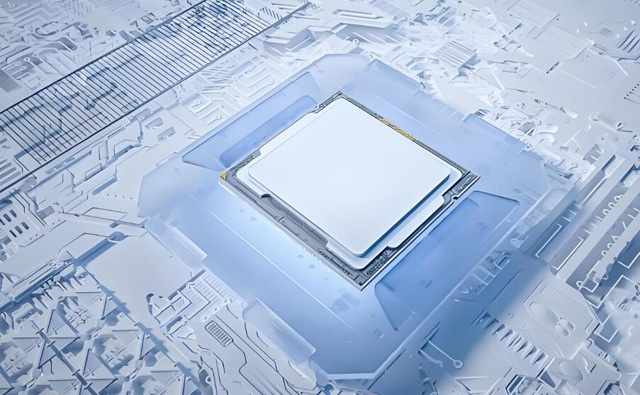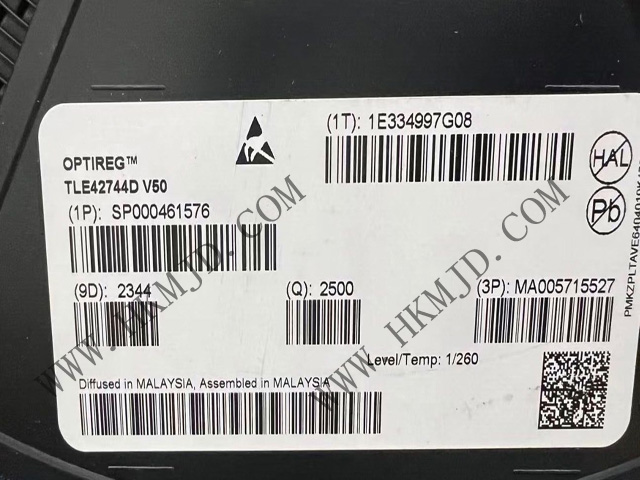Welcome Here Shenzhen Mingjiada Electronics Co., Ltd.

sales@hkmjd.com

sales@hkmjd.com

Service Telephone:86-755-83294757
 Latest Information
Latest Information Home
/Industry Information
/
Home
/Industry Information
/
Arm's new flagship CPU to be launched this year, delivering double-digit IPC performance gains
Currently, AI development is ubiquitous, and its pace continues to surpass expectations. AI large models are evolving in increasingly faster, smaller, and more powerful ways, enabling edge AI to truly take root and develop.As a computing platform comp…
Currently, AI development is ubiquitous, and its pace continues to surpass expectations. AI large models are evolving in increasingly faster, smaller, and more powerful ways, enabling edge AI to truly take root and develop.
As a computing platform company, Arm is at the heart of this AI revolution, helping partners integrate technology and scale up more quickly through a system-level approach to capitalise on the opportunities AI presents. From the cloud to the edge, Arm is demonstrating leadership in computational efficiency and energy efficiency across various applications.
After concluding his schedule at Taipei COMPUTEX, Arm Senior Vice President and General Manager of the Client Business Unit Chris Bergey visited Beijing and was interviewed by Jiemian News, sharing his insights and thoughts on AI. Chris Bergey revealed that the latest Armv9 flagship CPU (codenamed Travis) will be launched later this year, delivering double-digit IPC performance improvements and enhanced AI performance.

Accelerating the Adoption of Edge AI: Arm's Three Key Advantages
Currently, with the popularisation of AI smartphones and AI PCs, an increasing number of edge devices are gaining AI capabilities. The growing demand for computational power in edge devices presents significant opportunities for deploying AI across various scenarios.
This year is also referred to as the ‘Year of AI Agent Deployment,’ with embodied robots leading the way in the emergence of physical AI, creating new application scenarios, and successful commercial projects and startups accelerating their growth.
In Chris Bergey's view, there are two areas of particular interest in AI agents. The first is using AI for programming, code review, and modification. The second is using AI to enhance customer support and customer service.
‘In these two areas, some startups are growing rapidly, achieving revenue of over $100 million with fewer than 100 employees,’ said Chris Bergey.
In the realm of physical AI, robotics technology has begun to be applied across multiple fields, such as robotic dogs, delivery robots, and vacuuming robots.
‘These devices have achieved a certain degree of autonomous operation, but it is difficult to say that they have reached the same level of intelligence as human operators. However, within the next one to three years, we will soon witness a significant shift: when these devices operate in autonomous mode, their performance will rival that of human operators. This will present immense development opportunities,’ Chris Bergey told Jiemian News.
From the perspective of the foundational elements of building AI systems, Chris Bergey identifies three key factors.
First, creating a ubiquitous platform from the cloud to the edge will be of immense value. Since AI primarily operates on the edge, certain workloads may be shifted to the cloud. Therefore, having a highly portable platform is invaluable for advancing cutting-edge technologies and products, as well as adding new features to existing products.
Second, power consumption and performance per watt. AI has created immense opportunities but also increased energy consumption. Currently, data centre energy consumption has surged from megawatt (MW) to gigawatt (GW) levels, with over 50% coming from racks and semiconductor equipment. In an AI-enabled world, while there is immense potential for growth, it also requires massive computational power, meaning ‘performance per watt’ will become the most critical metric.
Thirdly, the importance of software. Arm currently has the world's largest developer ecosystem, with over 22 million software developers. Meanwhile, the cumulative shipment of chips based on the Arm architecture has exceeded 310 billion units to date. This scale creates a virtuous cycle: the large number of devices based on Arm technology drives the rich Arm software ecosystem, while the robust software ecosystem further spurs more hardware development opportunities.
‘Last year, Arm launched Arm Kleidi, aimed at providing an AI software library that enables AI workloads to run faster on the latest Arm CPUs—the Armv9 architecture—while also offering future-proof sustainability. To date, Kleidi has accumulated over 8 billion installations and continues to grow. Kleidi is also integrated with many global mainstream AI frameworks, including Tencent's Angel machine learning framework in China,’ said Chris Bergey.
Expanding market share from data centres to edge AI
After years of development, Arm has become widely recognised in edge devices and applications. However, Arm has also been active in the data centre sector for over a decade. In recent years, driven by AI technology and its energy efficiency advantages, Arm's data centre products have garnered increasing attention and continued to expand their market share.
For example, a significant portion of Amazon Web Services (AWS), the world's largest cloud service provider, runs on AWS Graviton processors based on the Arm architecture. AWS has also stated that over 90% of its important customers (excluding Amazon) use Arm's advanced architecture and benefit from the exceptional energy efficiency of Arm technology, with many of these customers being well-known companies in the industry. Over the past two years, more than 50% of the new CPU computing power deployed by AWS has been based on Arm technology.
‘Initially, cloud service providers migrated their own first-party workloads to the Arm platform, followed by third-party workloads also shifting to the Arm platform, resulting in over 40% energy efficiency improvements for leading cloud service providers. Based on this momentum, we anticipate that the Arm architecture will account for half of the compute power shipped to leading cloud service providers by 2025,’ said Chris Bergey.
In the edge computing sector, Arm CPUs hold a pivotal position, widely adopted in edge computing devices running various mainstream operating systems (OS). In recent years, demand for Arm architecture in the PC and tablet markets has also surged. Arm projects that by 2025, Arm architecture will account for over 40% of total PC and tablet shipments.
Data centres and PCs have historically been areas where the Arm architecture has seen relatively low adoption, particularly in the data centre sector, which has long been dominated by the x86 architecture. If Arm's predictions come to fruition, this would undoubtedly be a major achievement.
This is primarily due to the significant performance improvements achieved through the launch of a series of platform products in recent years. Chris Bergey highlighted the collaboration between Arm and NVIDIA.
DGX Spark is NVIDIA's newly released desktop AI PC, featuring 10 Arm Cortex-X925 cores and 10 Cortex-A725 cores, along with a GPU capable of delivering up to 1 PetaFLOPs (10^15 floating-point operations per second) of AI performance, bringing data centre-level computing power to desktop products.
NVIDIA not only adopts Arm technology in edge-side products but also in data centre product platforms such as Grace Blackwell, where Arm-based CPUs and GPUs are tightly coupled and deeply optimised for the bandwidth and I/O density required for AI, thereby achieving more efficient computing performance.
In the mobile phone market, Chris Bergey also stated that Arm is providing cutting-edge CPU and GPU technology to numerous ecosystem partners (such as MediaTek), and these partners are collaborating with leading mobile phone manufacturers to bring outstanding mobile phone products featuring Arm technology to the market.
Next-generation flagship CPU to launch this year with double-digit IPC performance improvement
Last year, Arm launched its next-generation flagship computing platform, including the Cortex-X925. Based on the Armv9.2 architecture, the Cortex-X925 achieves a record-breaking 15% increase in IPC performance, significantly enhancing the capabilities of high-performance smartphone SoCs. The MediaTek Dimensity 9400 series launched last year, as well as the recently unveiled Xiaomi Xuanjie O1, both adopt the Cortex-X925 CPU, providing robust support for chip performance.
Chris Bergey noted that the Cortex-X925 boasts the industry's highest IPC performance, which is crucial. This is because the product of IPC (instructions per clock cycle) and frequency determines the overall platform performance. Compared to relying solely on increasing frequency to boost performance, improving IPC can more efficiently enhance performance while significantly improving energy efficiency. For mobile devices, controlling power consumption is undoubtedly a key consideration.
Additionally, Chris Bergey revealed that later this year, Arm will launch the next-generation Armv9 flagship CPU (codenamed Travis). At that time, based on the current industry-leading IPC performance of Arm processors, IPC performance will be improved by another double-digit percentage. Furthermore, this will be the first generation of processors to introduce the Armv9 Scalable Matrix Extension (SME), further accelerating the processing of AI workloads.
In terms of GPUs, the next-generation product (codenamed Drage) will incorporate Arm's Advanced Super Resolution (ASR) technology, enabling users to achieve console-level graphics and gaming experiences on mobile devices.
The combination of these two products will introduce the Arm Lumex CSS solution for the mobile market, laying the foundation for edge AI performance in future consumer electronics devices.
‘We believe the future of AI is bright, and this future will be shaped by Arm and its partners, including our key partners in the Chinese market,’ said Chris Bergey.

Time:2025-09-05

Time:2025-09-05

Time:2025-09-05
![Supply [Microchip] Microcontroller MCU, Supply Microchip SAM C Series 32-Bit MCU](/upload/202509/05/202509051334159032.jpg)
Time:2025-09-05
Contact Number:86-755-83294757
Enterprise QQ:1668527835/ 2850151598/ 2850151584/ 2850151585
Business Hours:9:00-18:00
E-mail:sales@hkmjd.com
Company Address:Room1239, Guoli building, Zhenzhong Road, Futian District, Shenzhen, Guangdong
CopyRight ©2022 Copyright belongs to Mingjiada Yue ICP Bei No. 05062024-12

Official QR Code
Links: